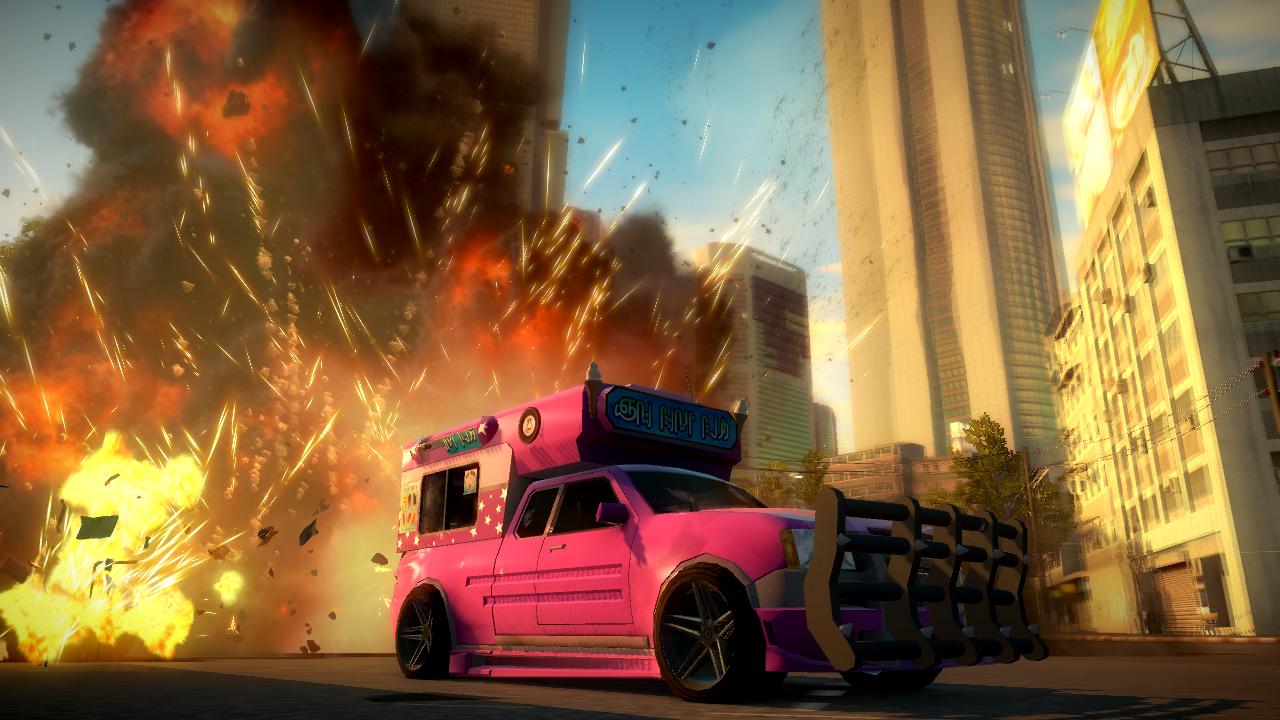GamesRadar+ Verdict
Pros
- +
Incredible game world
- +
Brilliant grapple hook
- +
So much fun in all the chaos
Cons
- -
Mediocre combat
- -
Horrid voice acting
- -
Some dire checkpoints
Why you can trust GamesRadar+
We look back at the first Just Cause in an only slightly sarcastic spirit of fondness. Riding the crest of the go-where-you-want, do-what-you-want wave, it presented players with an island of unparalleled beauty: its glittering seas stretching far to the horizon, its sun-kissed beaches giving gamers a very real glimpse of open-world gaming’s promise. There was one snag though: for all its holiday snap looks, it didn’t give players very much to do. Or rather it did, but none of it was that interesting – not after the first time, and certainly not after the hundredth.
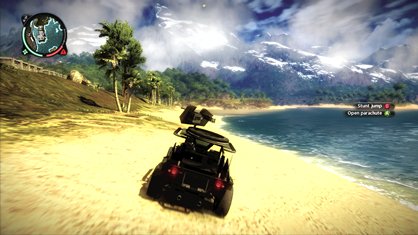
What that game needed – and practically everyone who played it for even the briefest time remains in agreement with this – was a smaller landscape and a more tightly focused and varied diet of wanton destruction for the player to feed on. Except developers Avalanche don’t agree.
See, Avalanche think differently. Kicking sand into the faces of everyone who reviewed the first game, they’ve gone landscape mental and delivered an even bigger environment to play in – and Sweet Mother of Mercy if it isn’t quite possibly the finest digital landscape ever to be splashed across a gigant-o-TV screen.
The island of Panau is absolutely stunning. Drop-dead gorgeous, awe-inspiring, Megan Fox-in-a-white-cotton-negligee (replace with dude of choice if you want) delicious – whatever words you want to throw at it, there’s no way in hell you’re ever going to do it justice. And anyone who says otherwise is an imbecile. Even if Avalanche had sprayed it with cough syrup, we’d have worked our hungry tongues all over it, from its luscious tropical peninsulas to its snowy mountain peaks.
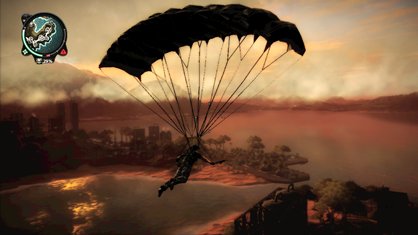
Grapple your way through dense, low-lying jungle to Panau’s frosty, mist-caressed highlands (deftly swinging the camera around to better appraise your location as you go) and you’ll start to appreciate just what Avalanche have created for you: a massive, detailed, and – seriously – even quite humbling vista that surely knows no equal.
Hand claps all around for Avalanche then. They did a damn fine job the first time and they’ve done an even better job for the main course. But what about the other bits? What about, you know, the actual game itself? Well, it seems, in this area at least, Avalanche were listening. Panau, gameplay-wise, is a vast improvement on San Espirito (setting of the first game), benefiting from a more focused structure and greater range of missions, all based around one key concept: causing absolute chaos.
The premise is simple. You’re given the task of tracking down Agency operative Sheldon, your Hawaiian shirt-wearing ‘boss’ in the last game. It turns out the silly bugger’s gone rogue and in order to uncover the truth you need to destabilise the region by hooking up with the game’s three gang factions, sabotaging military activities, taking civilian settlements and blowing the hell out of anything remotely explosive.
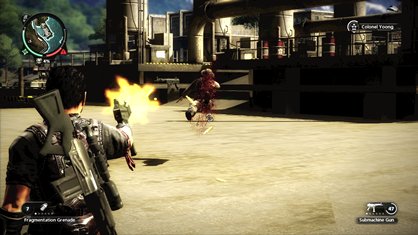
Unlike the first game, where the environment was curiously unaffected by your actions, your activities on Panau have a lasting impact on your progress. For example, taking enemy strongholds for a faction will increase the gang’s influence in that area. Collect hidden vehicle and weapons parts and you’ll be able to upgrade your ever-increasing arsenal of grenades, SMGs and rides for land, sea and air travel.
Crucially, collecting these items in addition to taking settlements and destroying radio masts, fuel dumps, generators and military outposts all give you Chaos points – and these are used for anything from unlocking story missions, to opening up the black market equipment and throwing up more faction missions for you to undertake. It’s a very clever system and always gives you a sense of purpose – to keep you looking for items, to keep blowing lots of things up, and to keep the flow of the action hammering on at full breakneck pelt.
Remember the item collection aspect from the last game? What a massive waste of time that turned out to be – a sprawling, tedious goose chase that didn’t really reward you for the huge effort involved. That criticism doesn’t apply anymore. Every vehicle part contributes, every health meter-extending armour pack helps the cause – the carrot-and-stick temptation to search every nook and cranny of the island (mercifully broken up into mini treasure hunts in each settlement) can be overwhelmingly compulsive, and Just Cause 2 is all the better for it.
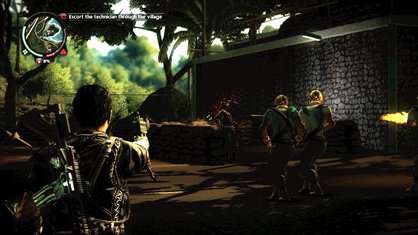
It seems like every conscious effort has been poured into making up for the original’s weaknesses – and it’s none more evident than in the improved missions. The first time around your patience creaked and groaned under the sheer weight of “Hey! Senor! Fetch me this car!/Find this package!/Kill this man!” missions. It was enough to drive you batshit insane – and the kind of grind that, for most people, was enough to make them stop playing. Admittedly, the game does still have its fair share of these missions (find us an open-world game that doesn’t) but the improved spaces in which they play out makes all the difference.
More info
| Genre | Action |
| Description | Just Cause 2 transforms an island paradise into the ultimate sandbox of open world destruction. |
| Franchise name | Just Cause |
| UK franchise name | Just Cause |
| Platform | "PC","PS3","Xbox 360" |
| US censor rating | "Mature","Mature","Mature" |
| UK censor rating | "18+","18+","18+" |
| Release date | 1 January 1970 (US), 1 January 1970 (UK) |
